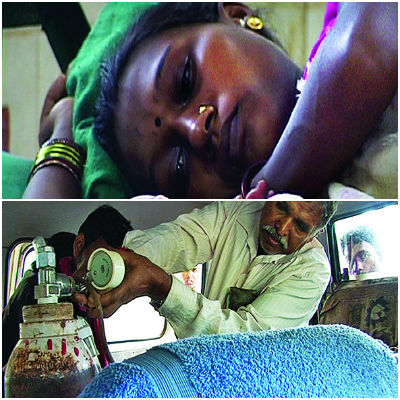First Cry, by activist Ajay TG, tells the story of a hospital built by contract workers for their own welfare, says Gargi Gupta
 Stills from the movie First Cry
Stills from the movie First Cry
What does it take to make a film that touches people's hearts? Not piles of money, not hi-tech cameras or fancy post-production facilities. All it takes, really, is the ability to tell a story -- simply without artifice, as filmmaker Ajay TG has done with his latest documentary First Cry. The 52-minute film, made on a shoestring budget and produced by Public Service Broadcasting Trust (PSBT) and Doordarshan, had its first screening at the Open Frame film festival of independent films in Delhi early this month.
It helps that Ajay had a heartwarming story to begin with. First Cry is the tale of Shaheed Hospital in Dalli-Rajhara, a small town near Bhilai Steel Plant in Chhattisgarh where a number of iron ore mines are located. The hospital, built back in 1983, is a unique institution that was built by the contract workers in the mines. It caters to these workers and is also run by them. Ajay tells the story without frills, with a steady camera following doctors on their rounds and recording the testimony of patients, nurses, mine workers and others. There's no music, just the ambient sound of cars passing, horns blaring and children crying.
Dalli-Rajhara has hospitals, run by Bhilai Steel Plant, but these tended to disregard the casual labourers who worked in the mines. When Kusum Bai, an office bearer of the Chhattisgarh Mines Shramik Sangh (CMMS), the labourers' trade union, died at childbirth after being turned away by the hospital, the labourers decided to take matters in their hands. They pooled in money to construct the hospital, contributing the allowances to buy cement, bricks and other materials, and volunteering to work on the construction after their shifts got over at 4 in the evening. They even got training as health workers so they could work as nurses and surgical assistants, giving injections, administering anaesthesia and screening patients in the OPD.
Shaheed Hospital has made a huge difference to the mine workers' families. Ajay's camera lovingly focuses on the crumpled faces of newborns delivered at the hospital , handed over to the parents along with crisp instructions on cleanliness, childcare and the importance of nutrition for the mothers. Notably, these nurses are not trained, what they know is what they have picked up on the job. "They can even make out complicated prescriptions written in English," says Alpana Jana, the head nurse. The doctors also don't talk down to the patients -- they go to the trouble of decoding X-ray plates and blood-pressure rates and explaining why they are prescribing a course of treatment.
The CMMS being a well-known labour union, the hospital has benefited by attracting doctors like Binayak Sen who have dedicated their lives to the service of the poor in remote areas.
The CMMS being a well-known labour union, the hospital has benefited by attracting doctors like Binayak Sen who have dedicated their lives to the service of the poor in remote areas.
In the 31 years since Shaheed Hospital opened, the radical left movement in Chhattisgarh has come a long way -- taking a violent turn with the Maoists, on the one hand, and deepening into a sustained critique of state and capital systems, on the other.
Ajay, who lives in Durg, is a member of the Chhattisgarh unit of the People's Union of Civil Liberties and has made a number of films highlighting issues such as gender discrimination, labour rights and land-grabbing. This activism led to his arrest in 2006 and he remained in jail for two years, before a sustained campaign by left intellectuals and independent filmmakers led to his release in 2008. The police even took away his PowerMac G4 on which he edited his films. "I now use Adobe Premiere; it's a free software."
Where there's a will, a filmmaker will find a way.
No comments:
Post a Comment